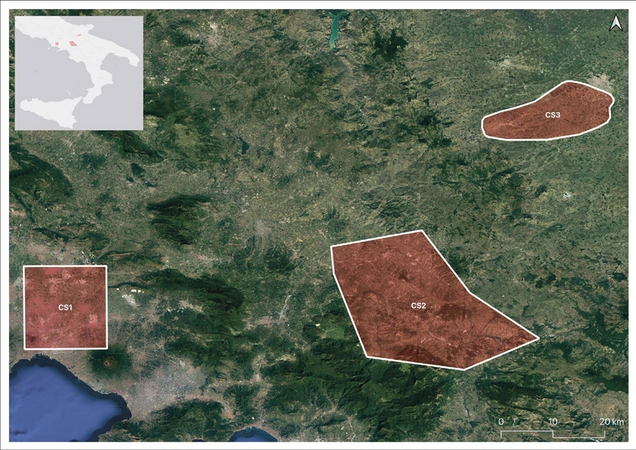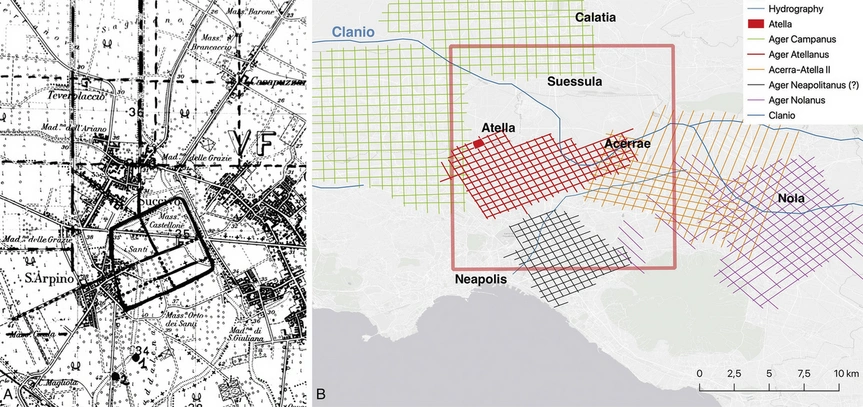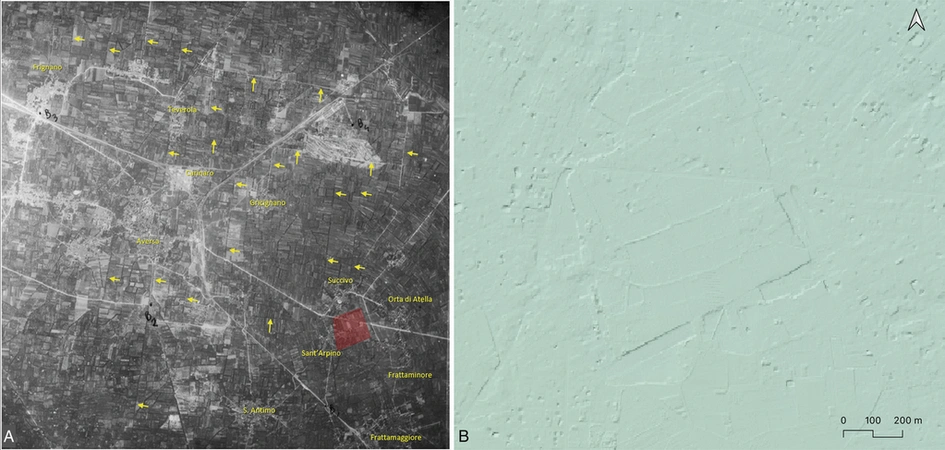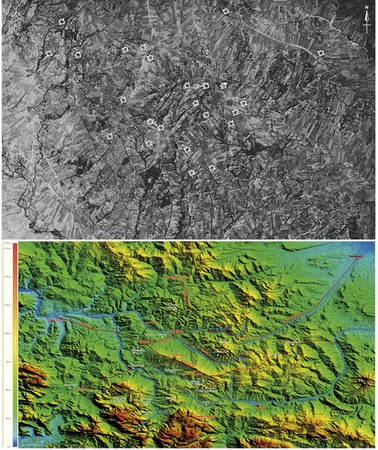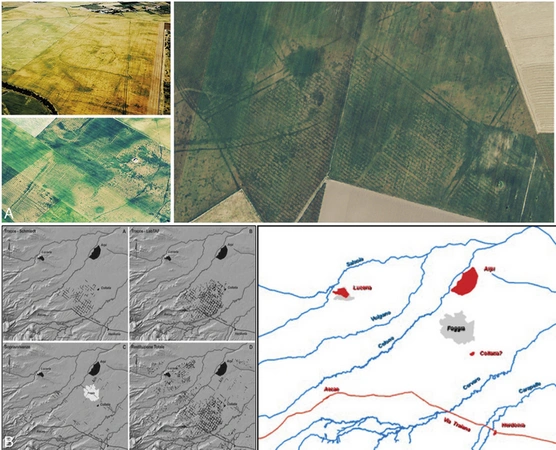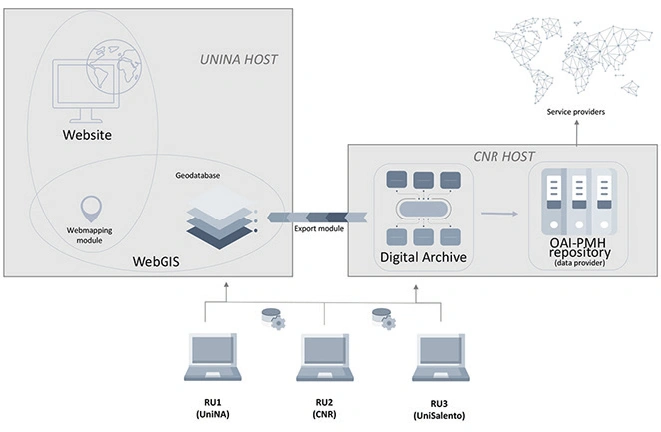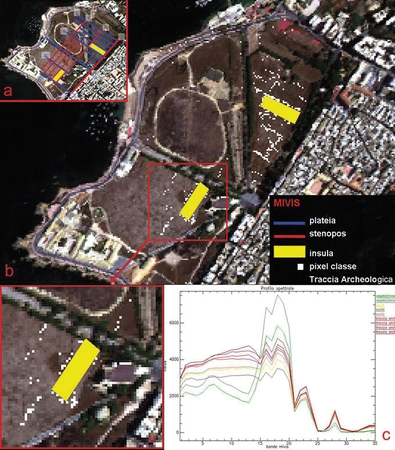Brancato R., Ferrari V., Ditaranto I., Merola P., Rossi I. 2024, Investigating resilient Roman agricultural landscapes in southern Italy. An integrated and open IT approach to modeling centuriation, in R. Brancato, J. Bogdani, V. Vitale (eds.), Linking Pasts and Sharing Knowledge. Mapping Archaeological Heritage, Legacy Data Integration and Web Technologies for Modelling Historical Landscapes (Naples, 13th-14th November 2023), «Archeologia e Calcolatori», 35.2, 387-400 (https://doi.org/10.19282/ac.35.2.2024.41)
Copy to clipboard Download: BibTeXInvestigating resilient Roman agricultural landscapes in southern Italy. An integrated and open IT approach to modeling centuriation
Rodolfo Brancato, Veronica Ferrari, Immacolata Ditaranto, Pasquale Merola, Irene Rossi
«Archeologia e Calcolatori» 2024, 35.2, 387-400; doi: 10.19282/ac.35.2.2024.41
Abstract
The In.Res.Agri project aims to optimize the understanding of Roman agricultural landscapes in Southern Italy by integrating topographical, archaeological, environmental, and textual data within an innovative data-science platform. It focuses on examining the resilience of Roman agrarian landscapes, specifically through elements such as centuriation, route networks, and settlement patterns. The project employs both traditional survey methods and advanced technologies to recover, interpret, and manage archaeo-topographical data related to centuriation. Key methods include using Machine Learning for the automatic detection of centuriated fields, spatial analysis of both legacy and new data, and the use of annotated epigraphic and literary sources. All collected data will be implemented into the Digital_Groma platform, which will feature a digital archive and a webGIS for data display and querying; data will be exposed adhering to FAIR principles. In.Res.Agri will focus on regions in Campania (Vesuvian Area, Irpinia) and Puglia (Tavoliere), exploring the link between contemporary landscapes and Roman centuriated agro-ecosystems. This research is crucial for understanding the impact of environmental changes on Cultural Heritage, aligning with the priorities of the European Commission and UNESCO. The Digital_Groma platform will be accessible to researchers, tourists, and public institutions involved in archaeology, urban planning, and cultural heritage protection.
Figures
Preview
Subjects:
Multimedia and web tools Survey and excavations
Download (PDF)Publishers:
CNR - Istituto di Scienze del Patrimonio Culturale
Edizioni All'Insegna del Giglio
This website uses only technical cookies strictly necessary for its proper functioning. It doesn't perform any profiling and doesn't use third party cookies of any kind.
Read our privacy policy for additional information.
By clicking 'OK' or closing this banner you acknowledge having read this information and accept the website's contents.

